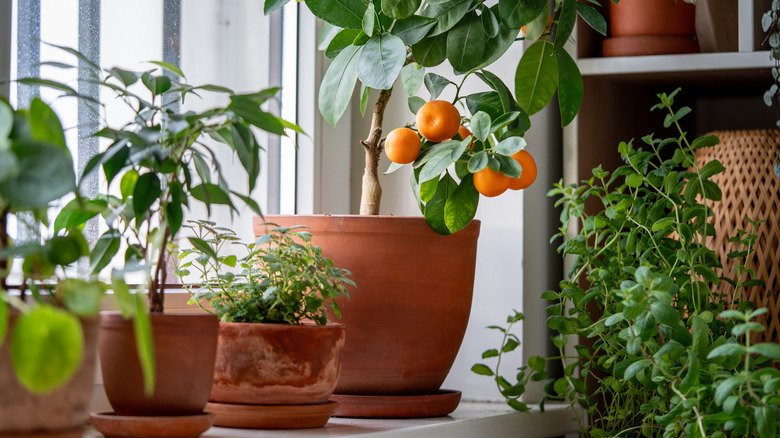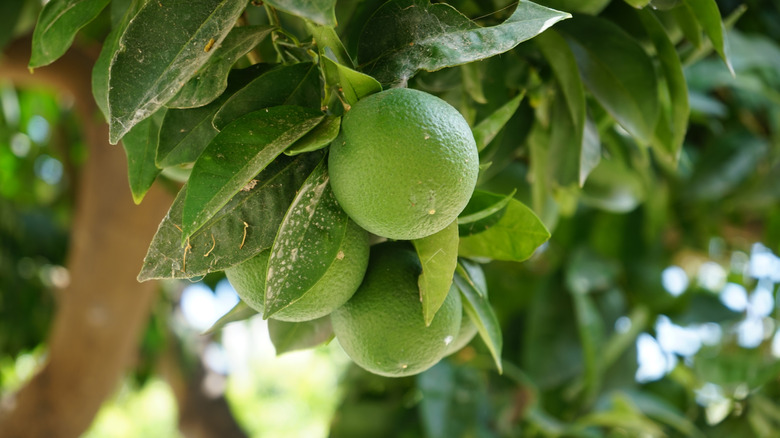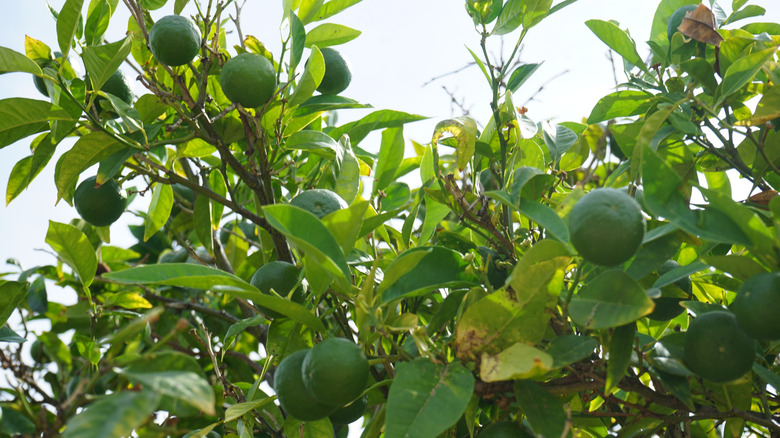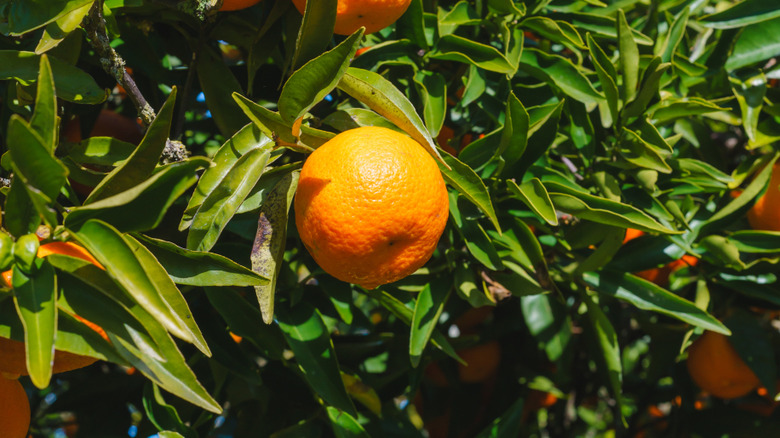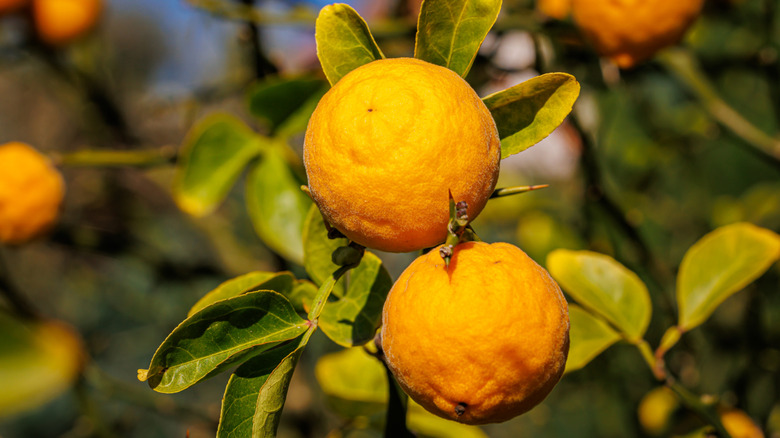7 Compact Orange Tree Varieties You Can Grow In A Container
Growing oranges might sound like something only gardeners in warm climates can do, but compact orange tree varieties for containers make it possible almost anywhere. Citrus trees have been cultivated in pots for centuries, and though they were once prized as luxury plants, they are now enjoyed by home gardeners who want fresh fruit within arm's reach. With a little attention and the right growing conditions, a potted orange tree should be able to thrive all year long, even in cooler regions where traditional citrus might struggle.
There's plenty you should know before growing a citrus tree indoors or outdoors, but the first step is choosing the right pot. Select a lightweight container with good drainage and a size that allows roots to spread out without getting soggy. To avoid root rot and ensure oxygen can get to the roots of your orange tree, use a well-draining palm or cactus mix. Place your orange tree on a south-facing patio or another spot that receives six to eight hours of direct sunlight every day.
Citrus trees grown in containers need consistent attention, but they reward that care beautifully. Water deeply when the top inch of soil feels dry, and check that water penetrates the entire root zone. With the right balance of light, moisture, and nutrients, even a compact orange tree can fill your home with the fragrance and flavor of the Mediterranean.
Sweet orange tree
Evergreen sweet orange trees (Citrus x sinensis) can reach heights of 30 feet, positioning them at the upper limit of what is typically considered to be a small tree. They are native to subtropical and tropical climates, prefer full sun, and produce the recognizable oranges found in grocery stores. Gardeners in colder climates can enjoy the fruit and smell of sweet oranges even outside of their natural area of USDA hardiness zones 9 to 11 by moving them indoors as frost begins to appear.
Blood orange tree
The blood orange tree (Citrus x sinensis 'Moro') is a medium-sized, evergreen tree that is smaller than regular sweet orange trees, growing between 12 to 20 feet tall and wide. It fits well in smaller landscapes, but it can also be grown as a potted tree, making it a smart choice for patios or sunny indoor spaces in zones 9 or 10. Moro trees grow clusters of fragrant white blossoms in spring, followed by deep red fruit with a sweet-tart flavor and floral aroma. It also makes an excellent ornamental tree for container growing.
Bitter orange tree
The bitter orange tree (Citrus x aurantium) should be grown in containers in colder climates so it can be moved indoors over winter. This broadleaf evergreen can reach up to 30 feet tall, but it adapts well to pots, making it more suitable for patios or indoor spaces. Hardy in zones 8 to 11, this thorny, smooth-barked tree grows best in full sun and moist, well-drained soil. Its glossy foliage and fragrant white blooms add ornamental value that gardeners will love to have in their yard.
Clementine orange tree
Clementine orange trees (Citrus x clementina) are well-suited for being grown in containers in zones 9 to 11. A hybrid between a mandarin and a sweet orange, it can grow between 10 and 15 feet tall when it's planted in the ground, but when grown in pots, it stays smaller — usually between 6 and 8 feet. This winter citrus is one of the hardiest trees for cooler climates, but it still flourishes in full sunlight. It needs moist, well-drained soil to provide diligent gardeners with fragrant flowers and vibrant orange fruit, even in limited spaces.
Dancy tangerine trees
The Dancy tangerine (Citrus reticulata 'Dancy') is a compact evergreen tree, ideal for small gardens or containers in zones 9 to 11. Dancy tangerines, like all tangerines, are a type of mandarin orange, and have a deep red-orange skin. Dancy trees grow well in sandy, well-drained soil and full sun, reaching heights of 12 to 15 feet and widths of up to 25 feet. It's possible for Dancy trees to be grown indoors as potted trees when they have enough light and are placed in a warm area.
Hardy orange tree
The hardy orange tree (Citrus trifoliata) is a compact, deciduous citrus that gardeners are sure to enjoy for its resilience and the bright colors that it provides. Native to China, it grows to a height of 8 to 20 feet as a prickly shrub or small tree, and prefers USDA zones 5 to 9. This cold-tolerant species produces fragrant white spring blooms and tiny yellow fruits that are extremely acidic yet visually arresting. It prefers full sun and well-drained, acidic soil. Gardeners should know that this orange tree variety is invasive in several parts of the United States.
Calamondin orange tree
The calamondin orange (Citrus x microcarpa) is a compact evergreen tree that is native to Southeast Asia. It thrives in zones 10 and 11, and reaches just 10 to 20 feet tall when grown outdoors. Its fragrant white blooms and bright, tangy fruits make it equally decorative and practical. In cooler regions, calamondin adapts well to container growing. Be sure to move it indoors before temperatures drop below 40°F. With full sun, regular watering, and well-drained, loamy soil, this orange tree variety is great for growing in containers and small spaces like patios.
